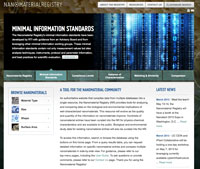 RTI is expanding the utility of its Nanomaterial Registry by partnering with research organizations, universities, and industry in the nanomaterial research community to answer important questions on the connections between nanomaterial physical and chemical characteristics and nanomaterial benefits and risks.
RTI is expanding the utility of its Nanomaterial Registry by partnering with research organizations, universities, and industry in the nanomaterial research community to answer important questions on the connections between nanomaterial physical and chemical characteristics and nanomaterial benefits and risks.
May 6th, 2013
Read more
Columbia Engineering researchers have developed a technique to isolate a single water molecule inside a buckyball and to drive motion of the so-called 'big' nonpolar ball through the encapsulated 'small' polar H2O molecule, a controlling transport mechanism in a nanochannel under an external electric field. They expect this method will lead to an array of new applications, including effective ways to control drug delivery.
May 6th, 2013
Read more
Researchers were able to detect for the first time a major contributing factor to this limitation: trace residues of catalyst material left over from the development process prevent the organic photovoltaics from converting the maximum amount of sunlight to electricity.
May 6th, 2013
Read more
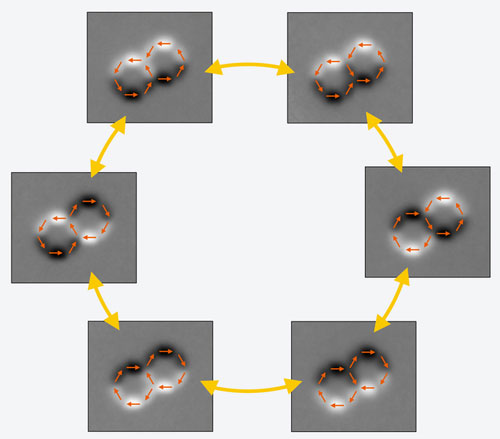 In the microscopic world, everything is in motion: atoms and molecules vibrate, proteins fold, even glass is a slow flowing liquid. And during each movement there are interactions between the smallest elements and their neighbours. To make these movements visible, scientists at the Paul Scherrer Institute have developed a special model system.
In the microscopic world, everything is in motion: atoms and molecules vibrate, proteins fold, even glass is a slow flowing liquid. And during each movement there are interactions between the smallest elements and their neighbours. To make these movements visible, scientists at the Paul Scherrer Institute have developed a special model system.
May 6th, 2013
Read more
For the first time, researchers from institutions around the country have conducted an identical series of toxicology tests evaluating lung-related health impacts associated with widely used engineered nanomaterials (ENMs). The study provides comparable health risk data from multiple labs, which should help regulators develop policies to protect workers and consumers who come into contact with ENMs.
May 6th, 2013
Read more
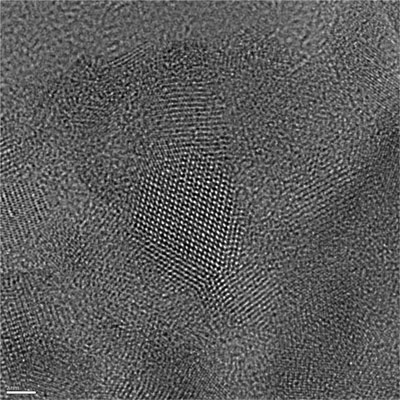 University of Utah metallurgists used an old microwave oven to produce a nanocrystal semiconductor rapidly using cheap, abundant and less toxic metals than other semiconductors. They hope it will be used for more efficient photovoltaic solar cells and LED lights, biological sensors and systems to convert waste heat to electricity.
University of Utah metallurgists used an old microwave oven to produce a nanocrystal semiconductor rapidly using cheap, abundant and less toxic metals than other semiconductors. They hope it will be used for more efficient photovoltaic solar cells and LED lights, biological sensors and systems to convert waste heat to electricity.
May 6th, 2013
Read more
Every time a firefighter braves an inferno, a scientist wonders if a new material or special flame-resistant coating could be created to protect him. Today, armed with nanocomposite techniques and insights into bio-based materials, new classes of smart, adaptable super-surface coatings are possible, according to European researchers.
May 6th, 2013
Read more
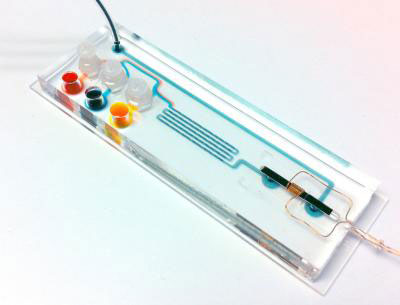 A handheld diagnostic device that Massachusetts General Hospital (MGH) investigators first developed to diagnose cancer has been adapted to rapidly diagnose tuberculosis (TB) and other important infectious bacteria.
A handheld diagnostic device that Massachusetts General Hospital (MGH) investigators first developed to diagnose cancer has been adapted to rapidly diagnose tuberculosis (TB) and other important infectious bacteria.
May 5th, 2013
Read more
Thermoelectric materials can be used to turn waste heat into electricity or to provide refrigeration without any liquid coolants, and a research team from the University of Michigan has found a way to nearly double the efficiency of a particular class of them that's made with organic semiconductors.
May 5th, 2013
Read more
Researchers at the Institute of Photonic Sciences (ICFO) report the observation of a highly fragile and volatile body through a new quantum-mechanical measurement technique.
May 5th, 2013
Read more
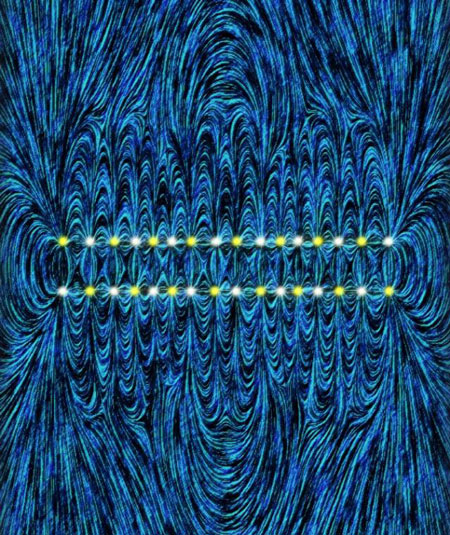 Frustration crops up throughout nature when conflicting constraints on a physical system compete with one another. The way nature resolves these conflicts often leads to exotic phases of matter that are poorly understood. New research explored how to frustrate a quantum magnet comprised of sixteen atomic ions - to date the largest ensemble of qubits to perform a simulation of quantum matter.
Frustration crops up throughout nature when conflicting constraints on a physical system compete with one another. The way nature resolves these conflicts often leads to exotic phases of matter that are poorly understood. New research explored how to frustrate a quantum magnet comprised of sixteen atomic ions - to date the largest ensemble of qubits to perform a simulation of quantum matter.
May 4th, 2013
Read more
Ion channels are important drug targets. A young team of researchers from the Department of Pharmacology and Toxicology, University of Vienna investigated the opening and closing mechanisms of these channels: for the first time the full energy landscape of such a large protein could be calculated in atomic detail.
May 3rd, 2013
Read more
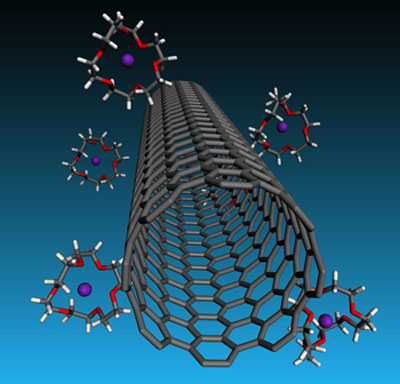 A Rice University laboratory's cagey strategy turns negatively charged carbon nanotubes into liquid crystals that could enhance the creation of fibers and films.
A Rice University laboratory's cagey strategy turns negatively charged carbon nanotubes into liquid crystals that could enhance the creation of fibers and films.
May 3rd, 2013
Read more
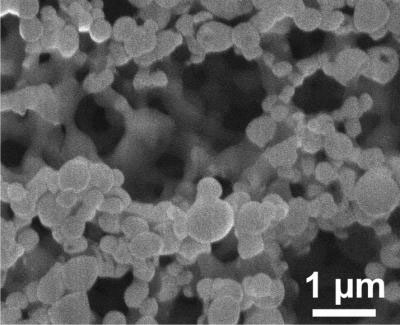 In a promising development for diabetes treatment, researchers have developed a network of nanoscale particles that can be injected into the body and release insulin when blood-sugar levels rise, maintaining normal blood sugar levels for more than a week in animal-based laboratory tests.
In a promising development for diabetes treatment, researchers have developed a network of nanoscale particles that can be injected into the body and release insulin when blood-sugar levels rise, maintaining normal blood sugar levels for more than a week in animal-based laboratory tests.
May 3rd, 2013
Read more
IEEE International Electron Devices Meeting Announces 2013 Call for Papers in all areas of Electron Device Technology; Special Focus Sessions this year for BioMEMS, Analog Devices and Circuits, Advanced Semiconductor Manufacturing, and Terahertz Devices.
May 3rd, 2013
Read more
Wayne State University today announced an initiative to increase and diversify microtechnology research at its multimillion dollar Nano Fabrication Core Facility (nFab).
May 3rd, 2013
Read more
 RTI is expanding the utility of its Nanomaterial Registry by partnering with research organizations, universities, and industry in the nanomaterial research community to answer important questions on the connections between nanomaterial physical and chemical characteristics and nanomaterial benefits and risks.
RTI is expanding the utility of its Nanomaterial Registry by partnering with research organizations, universities, and industry in the nanomaterial research community to answer important questions on the connections between nanomaterial physical and chemical characteristics and nanomaterial benefits and risks.






 Subscribe to our Nanotechnology News feed
Subscribe to our Nanotechnology News feed